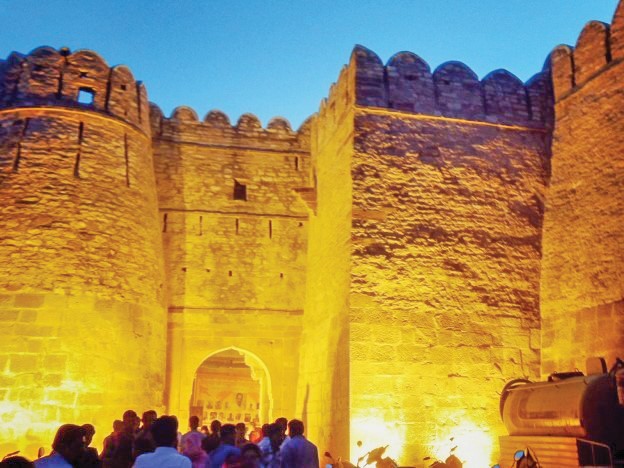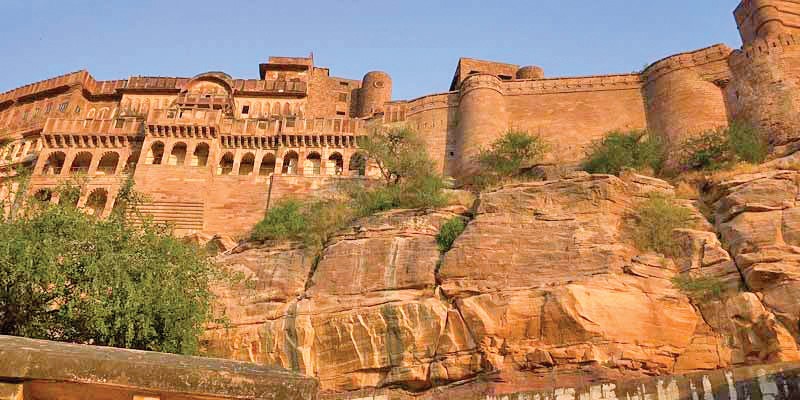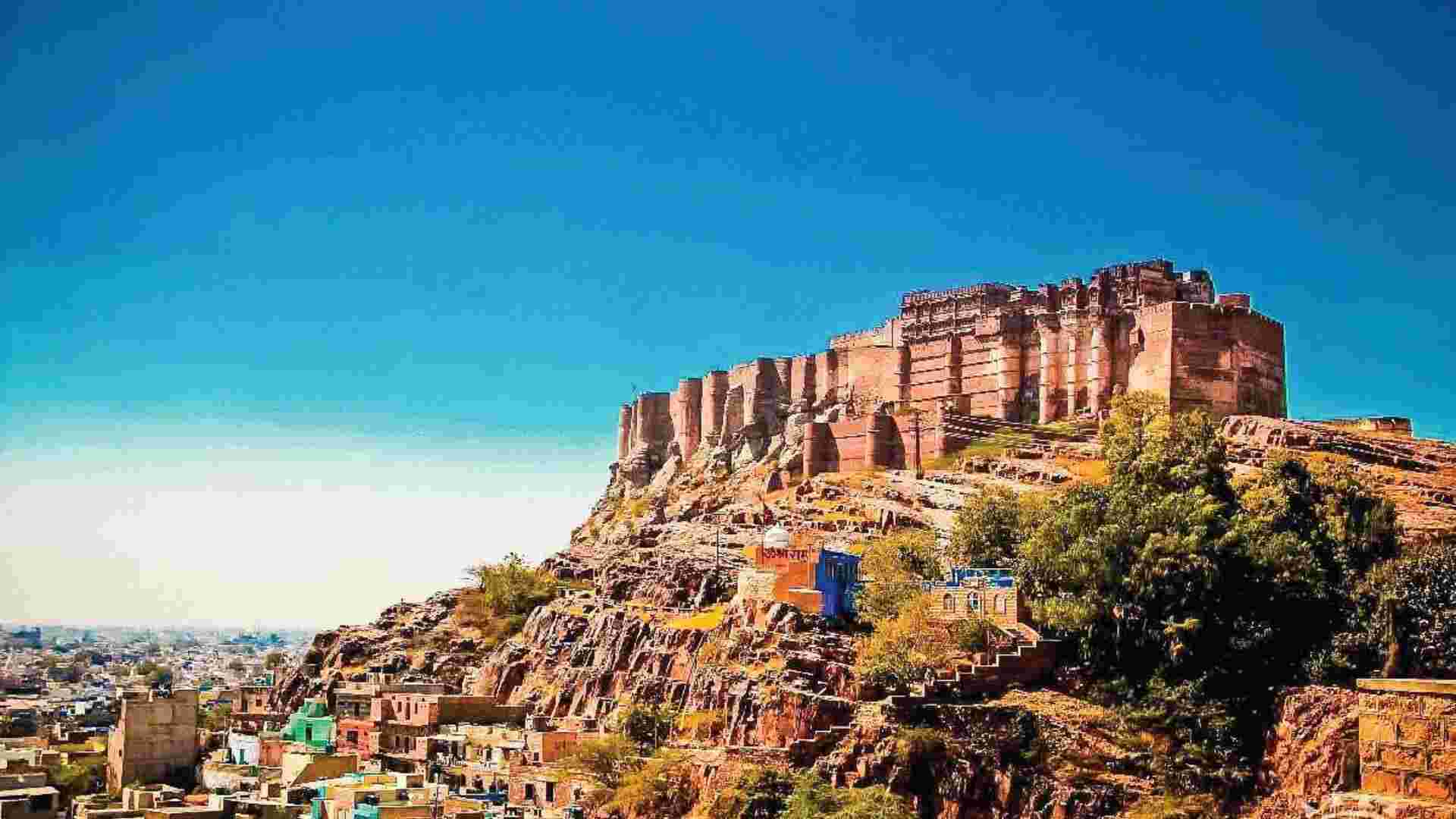A lesser-known architectural wonder, Phalodi Fort gives visitors an insight into the region’s rich history and the creativity of its architects. Once they stray off the main route, they find a castle that has endured the test of time and is discreetly keeping the secrets of a bygone period safe.
The Fort’s Foundations
Rao Hammir Nahar, a Rajput lord from the area, constructed Phalodi Fort in 1488 during a period of conflict over politics and territorial expansion. Due to its advantageous location on a historic trade route, the fort changed ownership several times over its existence. The fort was taken over by a number of emperors, including the Mughals and the Maharajas of jodhpur, after initially functioning as a center for the Rathore group. A distinct fusion of styles and influences that may still be seen today was created by the passing regimes, leaving their imprint on the fort’s architectural and cultural resonance.

Architectural tribute to Rajputana Craftsmanship
Phalodi Fort, situated on a little hill, offers panoramic views of the surrounding desert terrain. Its massive, mostly made of yellow sandstone building stands sharply against the background of the immense Thar Desert, captivating visitors from a distance. Rajputana’s ancient military and artistic sensibilities are perfectly captured in the fort’s construction. The fort complex is surrounded by huge walls that rise to a height of 40 feet, offering strong defense against any possible attackers. Numerous watchtowers and bastions pierced these walls, providing advantageous viewpoints for defense and observation.
Portals to the Past
A series of towering gates, each intended for ceremonial and defensive reasons, lead up to the fort. The main gate is a work of architectural art in and of itself. It has strong timber doors reinforced with iron spikes and elaborate carvings, which are typical of Rajasthani forts built to fend off elephant attacks.

Explore the Open Spaces of courtyards
The fort opens up into many roomy courtyards as you get through the gates. In the past, the royal court, military gatherings, and public events were held in these open spaces. They provide guests with a calm area to enjoy the fort’s magnificence and envision the flurry of activity that formerly occupied these now-quiet environs.
A variety of buildings, including administrative offices, smaller temples, and royal rooms, round the courtyards and each tells a different tale about life inside the fort’s walls.
Zenana, The Women’s Quarters
The zenana, or women’s quarters, is one of Phalodi Fort’s most fascinating areas. Designed to provide the royal women solitude and comfort, this section highlights some of the most stunning architectural aspects of the fort.
The windows are decorated with delicate lattice work called jaalis, which provides isolation while enabling air and views of the outside world. The zenana’s walls are decorated with elaborate frescoes and mirror work that reflect the social standing of its occupants as well as the period’s aesthetic preferences.
Spirituality within temples
Numerous little temples that are dispersed around the fort complex are evidence of the previous occupants’ strong religious beliefs. Dedicated to several Hindu deities, these temples include vibrant paintings that sometimes portray scenes from mythology in addition to intricate stone sculptures.
The fact that these temples are located inside the fort walls emphasizes how religious and secular life were intertwined in medieval Rajasthan, a region where faith was an integral part of daily life even in fortified areas.
Water Conservation in the Desert
The clever water management system of Phalodi Fort is one of its most notable features. The designers of the fort included a number of measures to gather and store this essential resource because water is rare and valuable in this area.
Stepwells and Reservoirs
The fort has exquisitely crafted stepwells, referred to as baoris in the local vernacular. These buildings functioned as cool havens during the sweltering summer months in addition to giving access to groundwater. Frequently, the stairs that descend to the water’s edge are decorated with elaborate carvings that combine visual appeal with practicality.
In addition to stepwells, the fort includes several reservoirs and tanks designed to collect and store rainwater. These structures played a crucial role in ensuring a sustainable water supply for the fort’s inhabitants, even during prolonged dry spells.
Rainwater Harvesting Systems
The fort’s design incorporates clever rainwater harvesting techniques. Sloping roofs and channels direct rainwater into storage tanks, maximizing the collection of this precious resource. This ancient system of water conservation offers valuable lessons for modern sustainable architecture.
The Armory: Echoes of Military Might
A section of Phalodi Fort once housed an extensive armory, reflecting its importance as a military stronghold. While much of the original weaponry has been lost to time, remnants of this martial heritage can still be observed.
The thick walls of the armory, designed to withstand potential explosions, and the strategic placement of weapon storage areas provide insights into the military architecture of the period. Some areas still display hooks and brackets that once held an array of swords, shields, and other weaponry.
Restoration and Conservation
In recent years, efforts have been made to restore and preserve Phalodi Fort. While not as extensively renovated as some of Rajasthan’s more famous forts, it retains an authentic charm that allows visitors to imagine its past glory more vividly. Conservation work has focused on structural reinforcement, cleaning of stone surfaces, and restoration of some of the intricate artwork within the fort. These efforts aim to balance preservation with accessibility, allowing visitors to explore the fort while ensuring its longevity for future generations.
Cultural Significance
Phalodi Fort is more than just a historical monument; it’s a living testament to the region’s cultural heritage. The fort often serves as a backdrop for local festivals and events, allowing visitors to experience the vibrant traditions of Rajasthan. During these events, the fort comes alive with folk music, dance performances, and traditional crafts exhibitions, offering a holistic experience of Rajasthani culture. The juxtaposition of ancient architecture and living traditions creates a unique atmosphere that captivates visitors.
Visiting Phalodi Fort, Best Time to Visit
The fort is open to visitors throughout the year, but the cooler months from October to March offer the most comfortable climate for exploration. Early mornings or late afternoons are ideal for photography, as the changing light brings out the golden hues of the sandstone.
Guided Tours
Guided tours are available and highly recommended to fully appreciate the fort’s history and architectural nuances. These tours often include fascinating stories of battles, sieges, and the daily life of the fort’s inhabitants over the centuries.
It seems like traveling back in time to visit Phalodi Fort. Ancient inscriptions, worn-out stairs, and weathered stones all convey tales of a bygone past. Visitors might envision armies arriving on the horizon or caravans of traders traveling across the desert while observing the surrounding environment from the top of the fort.
The fort also provides insights into the creative technical and architectural solutions Rajasthani people came up with to survive in the difficult desert climate. Especially the water conservation methods demonstrate their inventiveness and may provide important insights for the modern world.
Discovering its historic walls, scaling its watchtowers, and meandering through its courtyards allows visitors to establish a connection with centuries of past. The fort invites visitors from today to put themselves in the shoes of people who once lived, fought, and dreamt within its walls. It serves as more than just a monument to the past.
Phalodi Fort provides an engaging and satisfying experience for anyone looking to see Rajasthan’s lesser-known attractions and get off the beaten path. It’s a site where history comes to life, where the spirit of Rajasthan’s desert empire lingers, and where the inventiveness of ancient architects continues to inspire.







